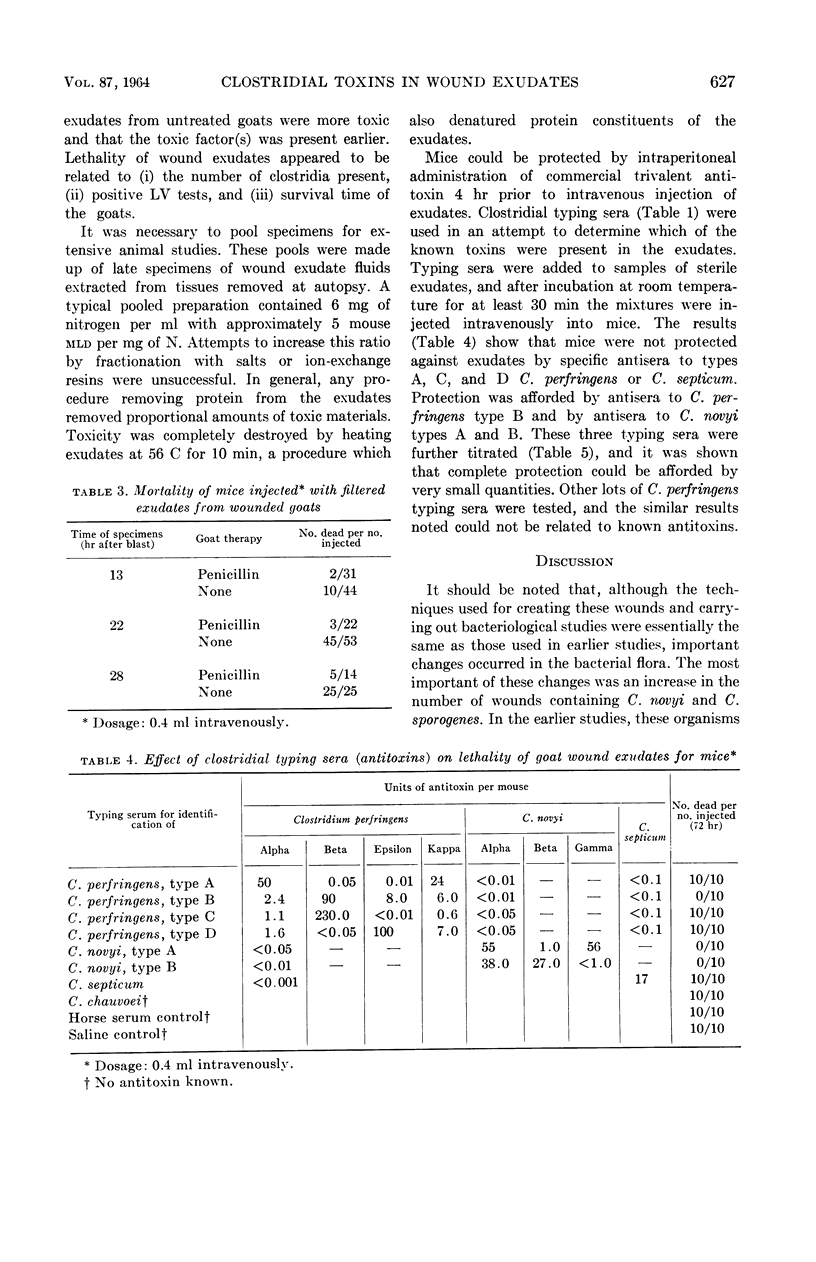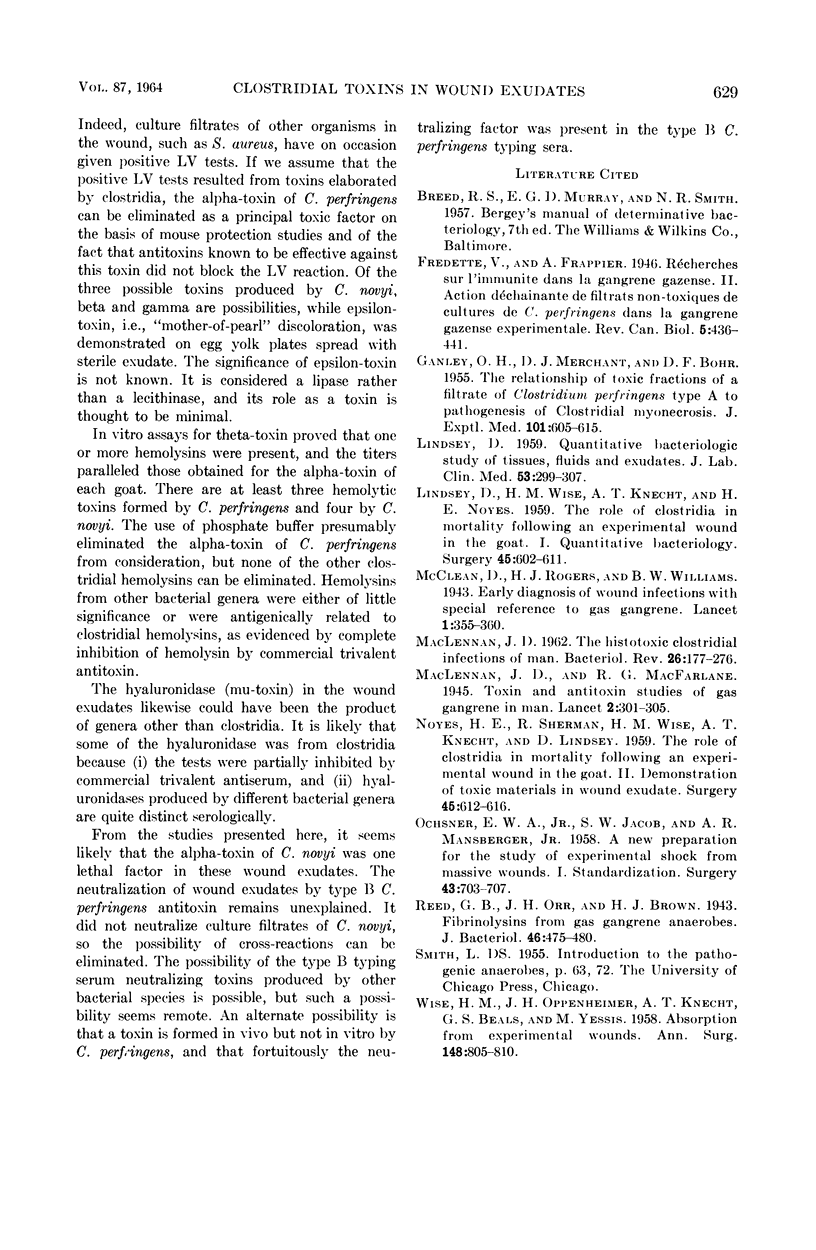Abstract
Noyes, Howard E. (Walter Reed Army Institute of Research, Washington, D.C.), William L. Pritchard, Floyd B. Brinkley, and Janice A. Mendelson. Analyses of wound exudates for clostridial toxins. J. Bacteriol. 87:623–629. 1964.—Earlier studies indicated that death of goats with traumatic wounds of the hindquarter could be related to the number of clostridia in the wounds, and that toxicity of wound exudates for mice and guinea pigs could be partially neutralized by commercial trivalent gas gangrene antitoxin. This report describes in vitro and in vivo analyses of wound exudates for known clostridial toxins. Wounds were produced by detonation of high-explosive pellets. Wound exudates were obtained by cold saline extraction of both necrotic tissues and gauze sponges used to cover the wounds. Exudates were sterilized by Seitz filtration in the cold. In vitro tests were used to measure alpha-, theta-, and mu-toxins of Clostridium perfringens and the epsilon-toxin of C. novyi. Mouse protection tests, employing commercial typing antisera, were used to analyze exudates for other clostridial toxins. Lethality of wound exudates for mice could be related to (i) the numbers of clostridia present in the wound, (ii) survival time of the goats, and (iii) positive lecithovitellin (LV) tests of the exudates. However, the LV tests could not be neutralized by antitoxin specific for C. perfringens alpha-toxin. Mice were not protected by typing antisera specific for types A, C, or D C. perfringens or C. septicum but were protected by antisera specific for type B C. perfringens and types A and B C. novyi.
Full text
PDF






Selected References
These references are in PubMed. This may not be the complete list of references from this article.
- LINDSEY D. Quantitative bacteriologic study of tissues, fluids, and exudates; some simplified methods. J Lab Clin Med. 1959 Feb;53(2):299–307. [PubMed] [Google Scholar]
- MACLENNAN J. D. The histotoxic clostridial infections of man. Bacteriol Rev. 1962 Jun;26:177–276. [PMC free article] [PubMed] [Google Scholar]
- OCHSNER E. W., Jr, JACOB S. W., MANSBERGER A. R., Jr A new preparation for the study of experimental shock from massive wounds. I. Standardization. Surgery. 1958 May;43(5):703–707. [PubMed] [Google Scholar]
- Reed G. B., Orr J. H., Brown H. J. Fibrinolysins from Gas Gangrene Anaerobes. J Bacteriol. 1943 Nov;46(5):475–480. doi: 10.1128/jb.46.5.475-480.1943. [DOI] [PMC free article] [PubMed] [Google Scholar]
- WISE H. M., Jr, OPPENHEIMER J. H., KNECHT A. T., BEALS G. S., YESSIS M. Absorption from experimental wounds. Ann Surg. 1958 Nov;148(5):805–810. doi: 10.1097/00000658-195811000-00011. [DOI] [PMC free article] [PubMed] [Google Scholar]


